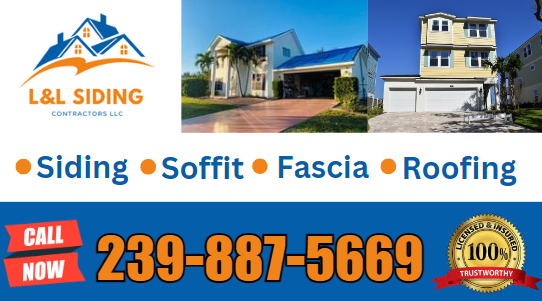Wood Siding
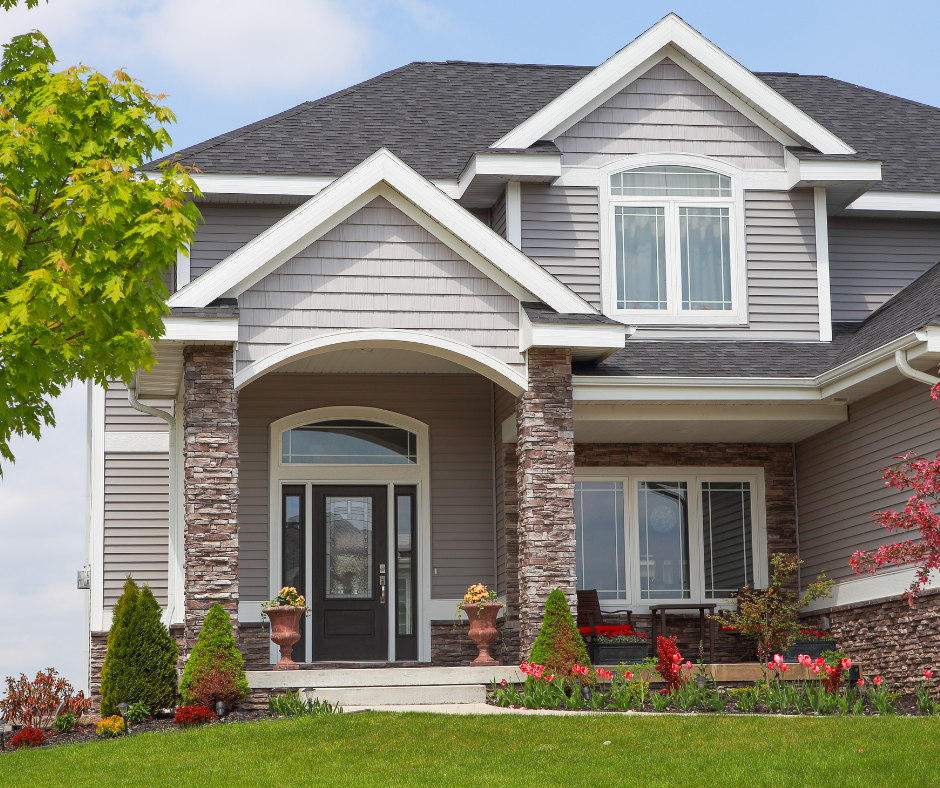
When it comes to home exteriors, one timeless and beloved option stands out – wood siding. It’s the stuff that dreams of cozy cottages and rustic cabins are made of. But what exactly is wood siding, and why does it have such enduring appeal? In this blog post, we’ll take a closer look at this classic cladding choice, exploring its benefits, pros and cons, and the unique charm it brings to your home.
What is Wood Siding?
Wood siding is essentially the outer shell of your home. It’s the protective layer that wraps your house, adding character, charm, and warmth. This type of siding is crafted from various wood species, with cedar, redwood, pine, and fir being the most common choices. Each type of wood has its unique grain, texture, and color, allowing you to tailor the look of your home to your taste.
Benefits of Wood Siding
- Timeless Aesthetics: Wood siding exudes a warm, inviting, and timeless charm that many other materials simply can’t match. It fits right in with both traditional and modern architectural styles.
- Natural Insulation: Wood has natural insulating properties, which can help regulate your home’s temperature and reduce energy costs. Your house stays cooler in summer and warmer in winter.
- Easy to Customize: Wood siding can be painted or stained in a vast array of colors, giving you endless possibilities to match your home’s aesthetic or create a unique look that’s all your own.
- Eco-Friendly: Siding made from sustainable, responsibly sourced wood is an environmentally friendly choice, as it’s biodegradable and renewable.
- Durability: While wood siding does require maintenance, it can last for decades with proper care, making it a durable choice.
Pros and Cons of Wood Siding
Pros:
- Natural Beauty: The authentic, organic look of wood siding is hard to beat. It can make your home stand out in a neighborhood.
- Easy to Repair: If a section of your wood siding becomes damaged, it can often be repaired or replaced without replacing the entire cladding.
- Versatility: Wood can be cut and shaped in various ways, allowing for a range of design possibilities.
Cons:
- Maintenance: Wood siding requires regular maintenance, including painting, staining, and sealing to protect it from the elements and pests.
- Cost: The initial cost of wood siding can be higher than some other options, but its longevity can justify the investment.
- Susceptible to Moisture: Without proper maintenance, wood siding can be vulnerable to moisture, which may lead to rot or warping.
The Enduring Appeal of Wood Siding
Wood siding isn’t just about protecting your home; it’s about embracing the natural beauty of wood and creating a cozy, inviting atmosphere. Its timeless appeal, ability to stand the test of time, and the freedom it offers for customization make it an attractive choice for many homeowners.
In conclusion, wood siding may require some TLC, but it rewards you with a warm, charming, and truly unique exterior. So, if you’re looking to give your home a classic and inviting facelift, don’t overlook the rustic allure of wood siding. It’s a choice that connects your home to the beauty of nature and adds that cozy, welcoming touch you’ve always dreamed of.
Vinyl Siding
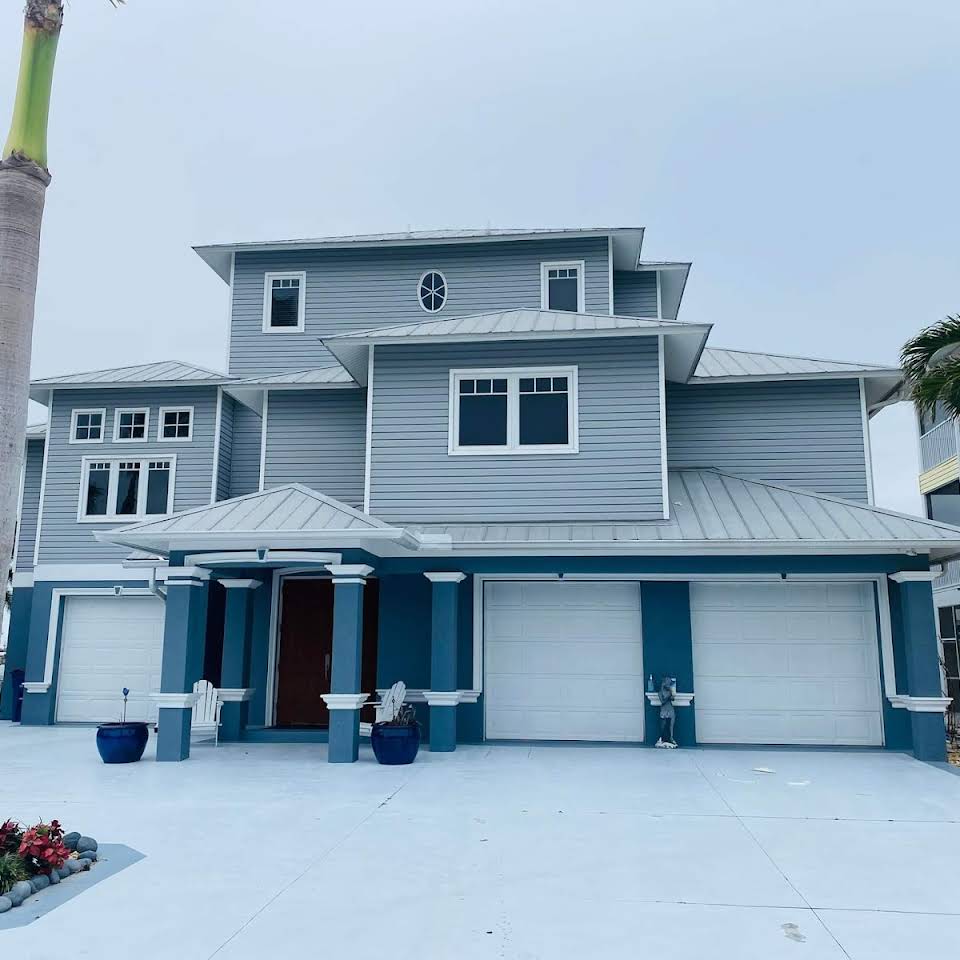
Are you thinking about giving your home’s exterior a fresh, updated look? If so, you’ve probably heard about vinyl siding. In this blog post, we’ll break down what vinyl siding is, its benefits, pros and cons, and why it’s become such a popular choice among homeowners.
What is Vinyl Siding?
Vinyl siding is a type of exterior cladding material made from polyvinyl chloride (PVC). It’s designed to cover and protect the walls of your home, adding a layer of insulation and enhancing its aesthetic appeal. Vinyl siding is available in a wide variety of colors, textures, and styles, allowing you to customize your home’s look to match your personal taste.
The Benefits of Vinyl Siding
- Low Maintenance: One of the most significant advantages of vinyl siding is its low maintenance. Unlike wood siding, which requires regular painting and sealing, vinyl siding only needs occasional cleaning with a hose or power washer to keep it looking great. It doesn’t rot, warp, or peel, making it an excellent choice for homeowners who want to spend more time enjoying their home and less time maintaining it.
- Durability: Vinyl siding is incredibly durable and can withstand various weather conditions, from heavy rains to harsh sun and snow. It’s also resistant to pests and doesn’t corrode, which means it can last for decades without significant wear and tear.
- Versatility: With vinyl siding, you have an array of options for colors and styles, from traditional clapboard to shingles or even a cedar shake appearance. This versatility allows you to give your home a unique and appealing look that suits your personal style.
- Affordability: Vinyl siding is cost-effective both in terms of installation and long-term maintenance. It’s often more budget-friendly than alternatives like brick or stucco, making it an excellent choice for homeowners on a budget.
The Pros of Vinyl Siding
- Energy Efficiency: Vinyl siding can help insulate your home, reducing heating and cooling costs. Many vinyl siding products come with insulation backings that improve your home’s energy efficiency.
- Variety of Colors and Styles: You’re not limited in terms of design. Whether you want a traditional or modern look, there’s a vinyl siding option to match your vision.
- Quick Installation: Vinyl siding is relatively easy to install, and a professional team can typically get the job done quickly, saving you time and minimizing disruptions.
The Cons of Vinyl Siding
- Environmental Concerns: The production of vinyl siding involves some environmental concerns, such as the release of toxic chlorine gas. However, advancements in production methods are making vinyl siding more eco-friendly.
- Appearance Changes: Over time, the color of vinyl siding may fade or become discolored due to exposure to the elements. While this can be mitigated with regular cleaning, it’s a point to consider.
- Not as Luxurious as Some Alternatives: While vinyl siding offers excellent value and durability, it may not have the luxurious look and feel of more expensive materials like stone or wood.
In conclusion, vinyl siding is an excellent choice for homeowners seeking an attractive, low-maintenance, and cost-effective way to enhance their home’s exterior. Its versatility and durability make it a popular option, and its variety of styles means you can achieve a look that’s uniquely yours. Just be sure to consider the pros and cons to ensure it’s the right fit for your specific needs and preferences. So, if you’re looking for a practical and stylish solution for your home’s exterior, vinyl siding might be the way to go!
Stucco
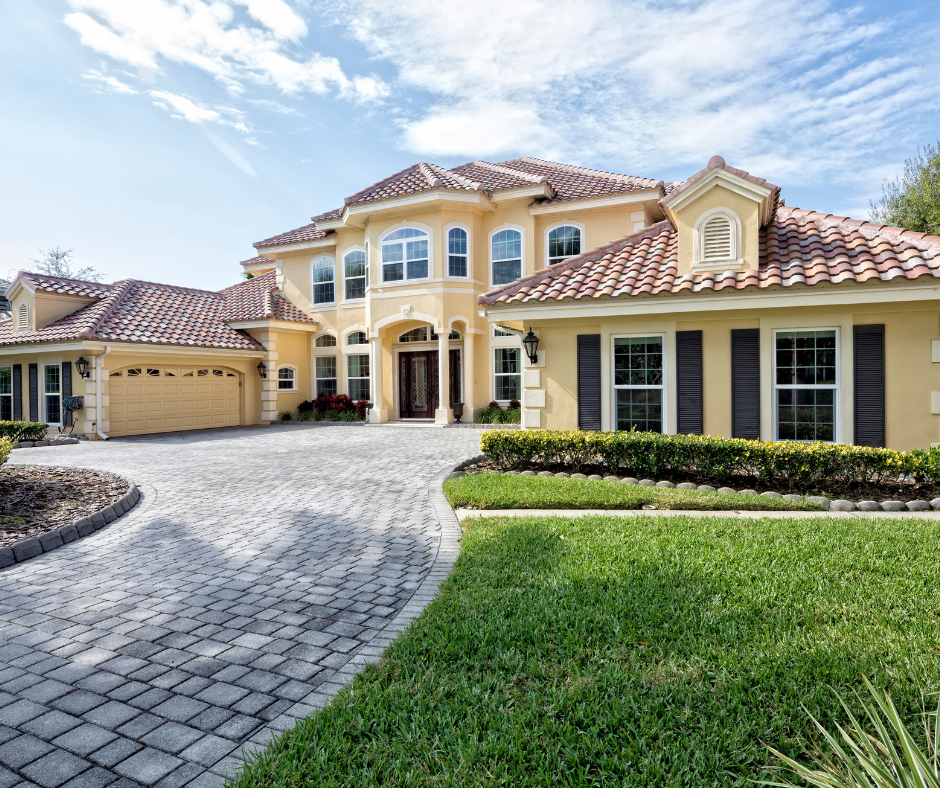
Hey there, home enthusiasts! If you’re looking for a way to give your house a classic, textured look, stucco might just be the answer you’re searching for. In this blog post, we’re going to dive into what stucco is, its benefits, pros, and cons, and why it continues to capture the hearts of homeowners all around the world.
What Is Stucco?
Stucco, my friends, is a durable and versatile exterior finish that has been used for centuries. It’s essentially a mixture of cement, sand, and water, with the option to include other additives for added strength and flexibility. Once applied, it hardens into a rock-solid, weather-resistant surface that not only looks fantastic but also protects your home.
The Benefits of Stucco
- Durability: Stucco is like the Chuck Norris of home exteriors. It can withstand the harshest of weather conditions, from scorching heat to freezing cold and everything in between. It’s resistant to fire, mold, and rot, making it an excellent choice for any climate.
- Low Maintenance: Unlike some high-maintenance materials, stucco is pretty chill. A simple hose-down or a gentle power wash now and then will keep it looking pristine. No need to worry about repainting or resealing year after year.
- Energy Efficiency: Stucco is an excellent insulator. It helps regulate the temperature inside your home, keeping it cool in the summer and warm in the winter. You’ll notice the impact on your energy bills!
- Versatility: Stucco is available in a wide range of colors and textures, allowing you to customize the look of your home. You can go for a traditional, rustic appearance or opt for a more modern, sleek finish.
The Pros
- Aesthetic Appeal: Stucco’s unique texture and the myriad of finishes available add a touch of character and elegance to your home.
- Longevity: With proper maintenance, stucco can last for decades, making it a sound investment.
- Fire Resistance: Stucco is naturally fire-resistant, adding an extra layer of safety to your home.
- Sound Insulation: It acts as a great sound barrier, reducing noise from the outside world.
The Cons
- Initial Cost: The installation of stucco can be more expensive compared to some other siding options. However, its durability often makes up for the higher upfront cost.
- Repairs: If damaged, stucco repairs can be a bit tricky and may require professional intervention.
- Cracking: Stucco can develop hairline cracks over time, especially in areas with extreme temperature fluctuations. These can be patched, but it’s essential to keep an eye on them.
Why Stucco Still Captivates
Stucco continues to capture the hearts of homeowners because it brings a timeless, Mediterranean charm to any house. Whether you’re going for a cozy cottage or a contemporary mansion, stucco offers a touch of elegance that few other finishes can match.
So, if you’re looking to give your home that standout factor, stucco might just be the way to go. It’s not only gorgeous but also long-lasting and energy-efficient. Sure, it has its quirks, but don’t we all? Just like any relationship, maintaining a stucco exterior takes some effort, but the results are more than worth it.
We hope this post has given you some insight into the world of stucco and why it’s an excellent choice for your home. Happy decorating!
Fiber Cement Siding
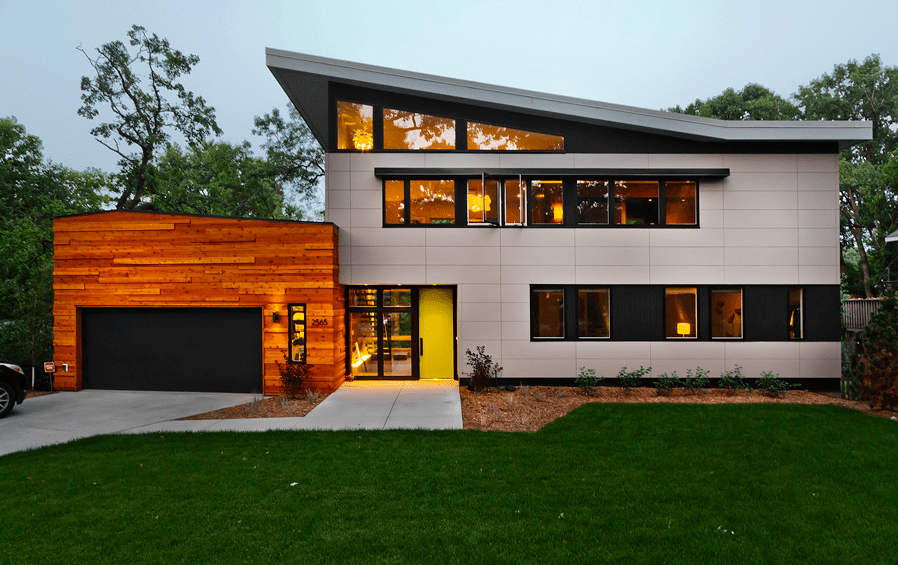
Are you looking for the perfect siding material to protect and beautify your home? Look no further, because fiber cement might just be the answer you’ve been searching for! In this blog post, we’re going to delve into the wonderful world of fiber cement siding, exploring what it is, its benefits, as well as the pros and cons. By the end of this, you’ll be armed with all the information you need to make an informed decision for your home.
What Is Fiber Cement? First things first, let’s get to know fiber cement. Fiber cement is a versatile building material composed of a mix of cement, cellulose fibers, sand, and water. This intriguing blend results in a durable, low-maintenance siding material that can mimic the appearance of wood, stucco, or even brick, depending on your preferences.
The Benefits of Fiber Cement:
1. Durability: Fiber cement is practically built to withstand the test of time. It’s not prone to rotting, warping, or being eaten by pests like some other siding materials can be. This means your home will remain stunning and protected for years to come.
2. Low Maintenance: If you’re looking for a siding that requires minimal upkeep, fiber cement is an excellent choice. It resists fading, chipping, and doesn’t need frequent repainting like wood siding.
3. Versatility: One of the fantastic aspects of fiber cement is its ability to mimic the look of other materials. You can get the aesthetic appeal of wood, stucco, or brick without the downsides of these materials.
4. Fire Resistance: Fiber cement is non-combustible, making it an ideal choice for areas prone to wildfires or where fire safety is a concern.
5. Eco-Friendly: Unlike vinyl siding, fiber cement is made from sustainable materials and doesn’t release harmful chemicals when exposed to heat.
Pros of Fiber Cement:
1. Aesthetics: Fiber cement siding offers an attractive appearance, with a wide range of styles and textures to choose from.
2. Longevity: It’s incredibly durable, lasting several decades with proper maintenance.
3. Weather Resistance: Whether it’s extreme heat, cold, rain, or wind, fiber cement can take it all in stride.
Cons of Fiber Cement:
1. Installation Difficulty: Fiber cement can be heavy and tricky to install, so it’s essential to hire an experienced professional.
2. Initial Cost: While it may cost more upfront compared to some other siding options, the long-term savings on maintenance can make it a wise investment.
3. Maintenance: Although it’s low-maintenance compared to wood, it’s not entirely maintenance-free. Periodic inspections and recaulking may be necessary.
The Appeal of Fiber Cement: The appeal of fiber cement lies in its ability to strike a balance between aesthetics, durability, and low maintenance. It’s a fantastic choice for homeowners who want the look of wood or brick without the associated drawbacks. Plus, it adds a layer of fire resistance that’s hard to beat.
In conclusion, fiber cement is a fantastic siding material for homeowners who want a long-lasting, good-looking, and low-maintenance exterior for their homes. By understanding the pros and cons, you can make an informed decision about whether fiber cement is the right choice for your house. So, if you’re thinking about giving your home a makeover, consider the beauty and brawn of fiber cement siding – your house will thank you for it!
Hardie Board Siding

Are you thinking about giving your home’s exterior a fresh new look? Whether you’re planning a major renovation or just want to spruce up your house’s curb appeal, siding is an essential aspect of the project. In recent years, Hardie Board Siding has become a go-to choice for homeowners seeking durability, versatility, and aesthetics. But what exactly is Hardie Board Siding, and what are its pros and cons? Let’s dive right in.
What is Hardie Board Siding?
Hardie Board Siding, also known as James Hardie Siding or Fiber Cement Siding, is a popular building material made from a combination of cement, cellulose fibers, and sand. This composite material is engineered to withstand the harshest elements, making it a reliable choice for residential and commercial construction.
Benefits of Hardie Board Siding:
- Durability: Hardie Board Siding is renowned for its toughness. It can endure the most extreme weather conditions, from scorching sun to freezing cold, without warping or cracking. Insects and pests also have a tough time gnawing through it, so you can enjoy a pest-free home.
- Low Maintenance: Unlike wood siding that requires regular staining or painting, Hardie Board Siding is virtually maintenance-free. It resists fading, chipping, and peeling, which means you’ll spend less time and money on upkeep.
- Versatility: Hardie Board Siding comes in a variety of styles and textures, so you can achieve the look you desire, whether it’s a classic, rustic, or contemporary aesthetic. It can even mimic the appearance of wood or stucco without the downsides of those materials.
- Fire Resistance: This siding material is non-combustible, providing an added layer of safety for your home in case of fire.
- Warranty: Many manufacturers offer generous warranties on their Hardie Board Siding products, giving you peace of mind that your investment is protected.
Pros of Hardie Board Siding:
- Resale Value: Installing Hardie Board Siding can significantly increase your home’s resale value, making it an attractive option for homeowners planning to sell in the future.
- Eco-Friendly: It’s made from sustainable materials and doesn’t contribute to deforestation, which is a concern with some wood siding options.
- Paint Retention: The material retains paint well, so your home will maintain its vibrant appearance over the years.
Cons of Hardie Board Siding:
- Cost: Hardie Board Siding can be more expensive upfront compared to other siding options like vinyl or wood. However, its long-term benefits often outweigh the initial investment.
- Installation: Proper installation is crucial to maximize the benefits of this siding, and it can be more challenging and time-consuming than installing other materials.
- Weight: Hardie Board Siding is heavier than vinyl, so your home’s structure may require additional support to handle the weight.
The Appeal of Hardie Board Siding:
The appeal of Hardie Board Siding lies in its ability to offer the best of both worlds: the aesthetics of traditional siding materials and the durability of modern composite technology. It adds a timeless, sophisticated look to your home while ensuring it remains well-protected against the elements. Plus, the low maintenance requirements mean you’ll have more time to enjoy your home, rather than constantly tending to it.
In conclusion, Hardie Board Siding can be an excellent choice for homeowners who prioritize durability, versatility, and long-term value. While it may come with a slightly higher price tag and installation demands, the benefits it offers make it a compelling option for your home’s exterior. So, if you’re considering a siding upgrade, don’t overlook the wonders of Hardie Board Siding – it might just be the transformation your home needs.
Stone or Faux Stone Siding
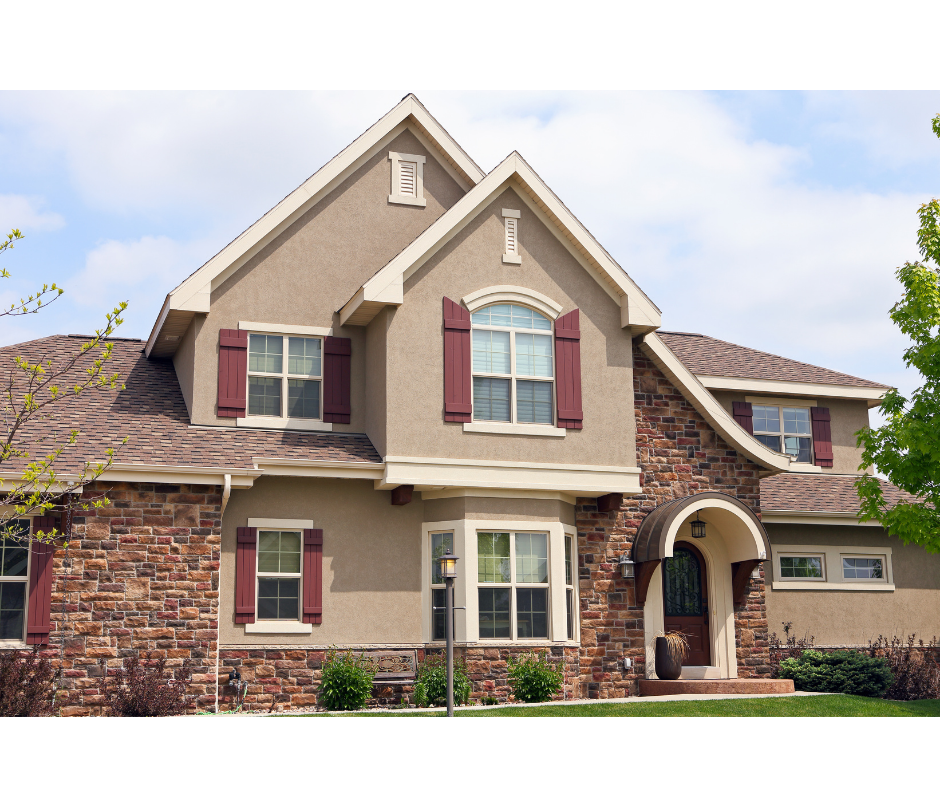
Are you thinking about upgrading your home’s exterior? You might have come across the idea of using stone or faux stone siding, and it’s worth exploring. In this blog post, we’ll dive into the world of stone and faux stone siding, discussing what they are, their benefits, pros and cons, and why they’re such a captivating choice for homeowners.
What Is Stone or Faux Stone Siding?
Before we get into the nitty-gritty, let’s clarify what we’re talking about here. Stone siding, also known as natural stone siding, is exactly what it sounds like – real stone pieces used to cover the exterior of your home. These stones are usually sourced from quarries, cut to size, and then installed to create a stunning, earthy appearance.
On the other hand, faux stone siding, as the name suggests, is a manufactured alternative. It mimics the look of real stone, often made from high-density polyurethane foam or other synthetic materials. The goal? To give your home that timeless, rustic charm without breaking the bank.
The Benefits of Stone Siding
1. Aesthetic Appeal
- Natural Beauty: Real stone siding provides an authentic, organic feel to your home’s exterior, creating a timeless and elegant appearance.
- Versatile Styles: Both real and faux stone siding offer a wide variety of styles and colors, ensuring you can find the perfect fit for your home’s aesthetic.
2. Durability
- Longevity: Real stone siding can last for centuries, while faux stone siding is built to endure for decades with minimal maintenance.
- Resistant to Weather: These sidings can withstand harsh weather conditions, including wind, rain, and extreme temperatures.
3. Low Maintenance
- Easy to Clean: Both options are relatively easy to clean and maintain, requiring only occasional washing or power washing.
The Pros and Cons
The Pros
- Increase in Home Value: The visual appeal of stone siding can boost your home’s market value.
- Energy Efficiency: Stone provides natural insulation, which can reduce energy costs.
- Eco-Friendly Options: Some faux stone products are made from recycled materials, making them environmentally friendly.
The Cons
- Cost: Real stone siding can be expensive, and installation may require a skilled professional.
- Weight: Both real and faux stone siding can be heavy, requiring proper support and foundation.
- Maintenance: While relatively low-maintenance, repairs can be tricky due to the need for precise matching.
The Appeal
The allure of stone or faux stone siding lies in its timeless elegance. Whether you prefer the authentic, rugged charm of natural stone or the cost-effective and lightweight alternative of faux stone, these sidings add character and visual appeal to any home. They blend seamlessly with a range of architectural styles, from traditional to modern.
In the end, the choice between stone or faux stone siding depends on your budget, maintenance preferences, and the look you desire for your home’s exterior. Both options offer a winning combination of durability, aesthetic appeal, and a touch of rustic sophistication.
So, whether you’re considering a full exterior makeover or just a subtle enhancement, keep stone or faux stone siding on your radar. It’s a choice that not only stands the test of time but also makes your home truly stand out.
Aluminum Siding
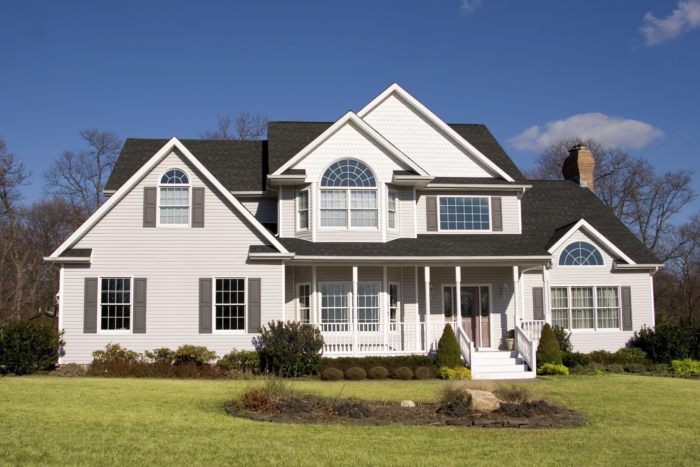
When it comes to protecting your home and boosting its curb appeal, aluminum siding is a material that often takes center stage. You might have seen those houses with their sleek, metallic finish, and wondered, “What’s the deal with aluminum siding?” Well, in this blog post, we’re going to break it all down for you, from what it is to its benefits, pros and cons, and why it’s a fantastic choice for many homeowners.
What Is Aluminum Siding?
First things first, let’s get the basics down. Aluminum siding is essentially a protective outer layer for your home. It’s made from sheets of aluminum that are shaped to resemble traditional wooden siding but without the hassle of maintenance. This durable material can come in various styles and finishes, giving your home a look that’s both modern and classic.
The Benefits of Aluminum Siding
So, why do people opt for aluminum siding? There are quite a few benefits that make it a top choice for many homeowners:
- Durability: Aluminum is a tough cookie. It’s resistant to rot, pests, and harsh weather conditions. You won’t have to worry about your siding warping or splitting like wood might.
- Low Maintenance: Say goodbye to painting and staining every few years. Aluminum siding doesn’t need much upkeep. A simple wash with a garden hose is usually enough to keep it looking good as new.
- Energy Efficiency: Aluminum siding can be fitted with insulation to help improve your home’s energy efficiency, reducing your heating and cooling costs.
- Color Variety: You can find aluminum siding in an array of colors and finishes. Whether you want a bright, bold look or a more traditional appearance, there’s an option for you.
- Fire Resistance: Aluminum siding is non-combustible, which means it adds an extra layer of safety to your home.
The Pros and Cons of Aluminum Siding
Of course, like anything in life, aluminum siding isn’t without its drawbacks. Here are some pros and cons to consider:
Pros:
- Longevity: Aluminum siding can last for decades, making it a cost-effective choice in the long run.
- Customization: It’s highly customizable, allowing you to tailor the look of your home to your taste.
- Easy Installation: Many contractors are experienced in installing aluminum siding, which can make the process relatively quick and painless.
- Environmentally Friendly: Aluminum is recyclable, so it’s an eco-friendly option.
Cons:
- Cost: The upfront cost can be higher than some other siding materials, like vinyl.
- Dents and Scratches: While durable, aluminum can dent or scratch if subjected to significant force.
- Noise: Rain and hail can be louder on aluminum siding compared to other materials.
The Appeal of Aluminum Siding
Aluminum siding’s appeal lies in its ability to blend functionality and aesthetics. Its sleek, modern appearance can enhance the curb appeal of your home while providing long-lasting protection. Plus, it’s a wise investment that can save you time and money on maintenance in the years to come.
In conclusion, aluminum siding is like the shiny armor your home deserves. Its durability, low maintenance, and customizability make it an excellent choice for homeowners looking to protect and beautify their homes simultaneously. Whether you’re in a cozy suburban neighborhood or nestled in the heart of the city, aluminum siding could be the perfect fit for your home. So, why wait? Give your home the protection and style it deserves with aluminum siding.
